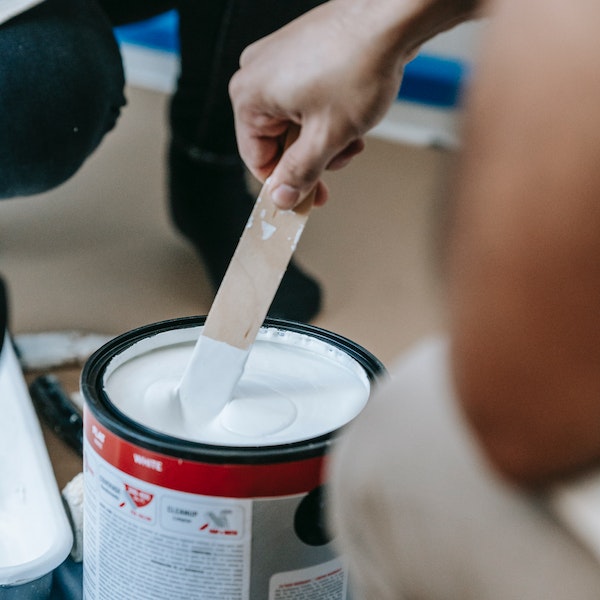Painting is one of those Do-it-yourself projects that everyone attempts at least once. Having a room transformed by picking the right paint color and taking the time to do the job right is tremendously rewarding. If a room in your house could use a new coat of paint, here are some things you should remember.
 1.) Using The Wrong Paint
1.) Using The Wrong Paint
Choosing the right interior paint color is often the focus of many painting projects. While color is necessary, the type of paint is just as crucial. Paint can adversely react to specific materials, leaving unintended textures on your wall. Oil-based paints that may be fine for wood or metal may peel or crack on concrete surfaces. You’d also want to avoid applying solvent-based paint over water-based paint. This could lead to paint that comes off easily or other reactions.
2.) Painting over Paint Problems
Not all walls are paintable. If the paint on your wall is chipping, cracking, peeling, or powdery or chalk-like, it is not paintable. Chalkiness usually indicates a damaged wall that needs to be repaired.
Chipping, cracking, and peeling paint can be scraped off with good-quality sandpaper until the wall is smooth enough for painting. Signs like mildew or blistering could point to a problem with moisture in the area that will need to be fixed; otherwise, this issue will most likely ruin your new paint job.
 3.) Neglecting Wall Prep
3.) Neglecting Wall Prep
Even if walls appear to be in good condition, there are things you can do to get better results. Wall Prep is a simple and essential part of painting. If you’ve ever just painted a wall as is, you are not alone, but there’s a better way. Cleaning walls with a bit of soap and water can go a long way in improving how your walls look after painting. Even sanding walls a bit and wiping off the dust can help the appearance of your paint project. Neglecting this step can lead
to walls that are grainy or uneven in color.
4.) Old Paint Color Bleeding Through
This often happens when painting a light color over dark walls. The dark color seeps through; this is called bleeding. You can imagine how frustrating this is, but it is avoidable by using a primer first. Primer is a type of paint that helps to coat the surface and allows for better paint adhesion. The white primer blocks out the dark color, so your lighter color shows crisp without the dark bleeding. As with wall prep, many people think they can skip primer, but the process of priming a wall can be the difference between an “ok” paint job and one that looks amazing.
If all of this sounds daunting, it doesn’t have to be. You can always call a professional. We at Franklin Painting make your project a priority. Call us at 860-678-7701 or contact us online to get a virtual estimate.
Frequently Asked Questions
1. What is people’s most common mistake when painting their room?
One of the most common mistakes is skipping proper surface preparation, such as cleaning, sanding, and priming the walls. This step is crucial for achieving a smooth and durable finish. The paint may not adhere well without it, leading to peeling or chipping over time.
2. How can I avoid leaving streaks or brush marks on my walls?
To avoid streaks or brush marks, use high-quality rollers and brushes designed for the type of paint you’re using. Apply the paint in a ‘W’ pattern, then fill the gaps with parallel strokes for even coverage. Also, avoid overloading your brush or roller with paint, and maintain a wet edge by working in manageable sections.
3. Why is my paint bubbling, and how can I prevent it?
Paint bubbling or blistering often occurs due to moisture trapped beneath the paint surface or painting over a dirty or oily surface. Ensure your walls are completely dry and clean before painting to prevent this. If you’re painting in a humid area, use a dehumidifier to reduce moisture levels in the room. Applying a primer can also help seal the surface and prevent moisture absorption.
4. What should I do if the paint color on my walls looks different than expected?
Paint colors can appear differently on walls due to lighting conditions, texture, and underlying paint colors. To avoid surprises, test the paint color on a small wall section and observe it under various lighting conditions throughout the day. If the color isn’t what you expected, consider adjusting your lighting or choosing a shade or finish that matches your vision better.

Frank Campanelli, the esteemed founder of Franklin Painting LLC, has been leading the company since 1986. He takes immense pride in the stellar reputation his dedicated team has built by consistently delivering top-notch service to each customer.


 1.) Using The Wrong Paint
1.) Using The Wrong Paint